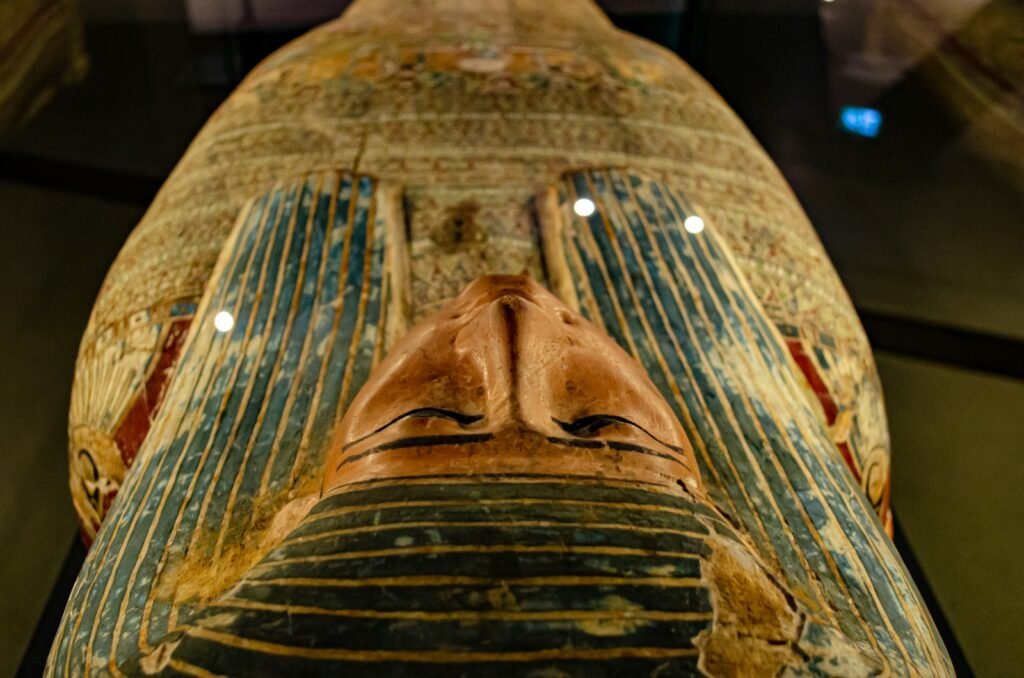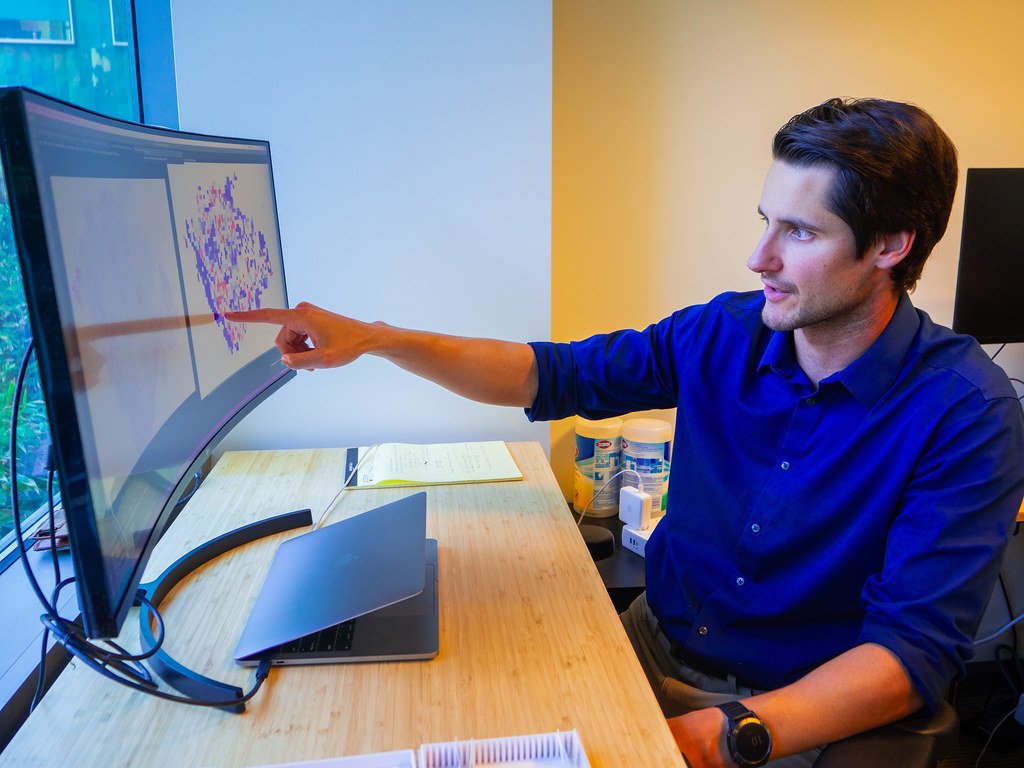Imagine hearing the voice of someone who died over three millennia ago. It sounds impossible, doesn’t it? Yet in 2020, scientists achieved exactly that when they successfully recreated the vocal sounds of Nesyamun, an ancient Egyptian priest whose mummified remains had been silent for 3,500 years. This groundbreaking achievement represents one of the most extraordinary intersections of ancient history and cutting-edge technology, opening doors to understanding how our ancestors actually sounded when they spoke.
The Priest Who Spoke to Gods
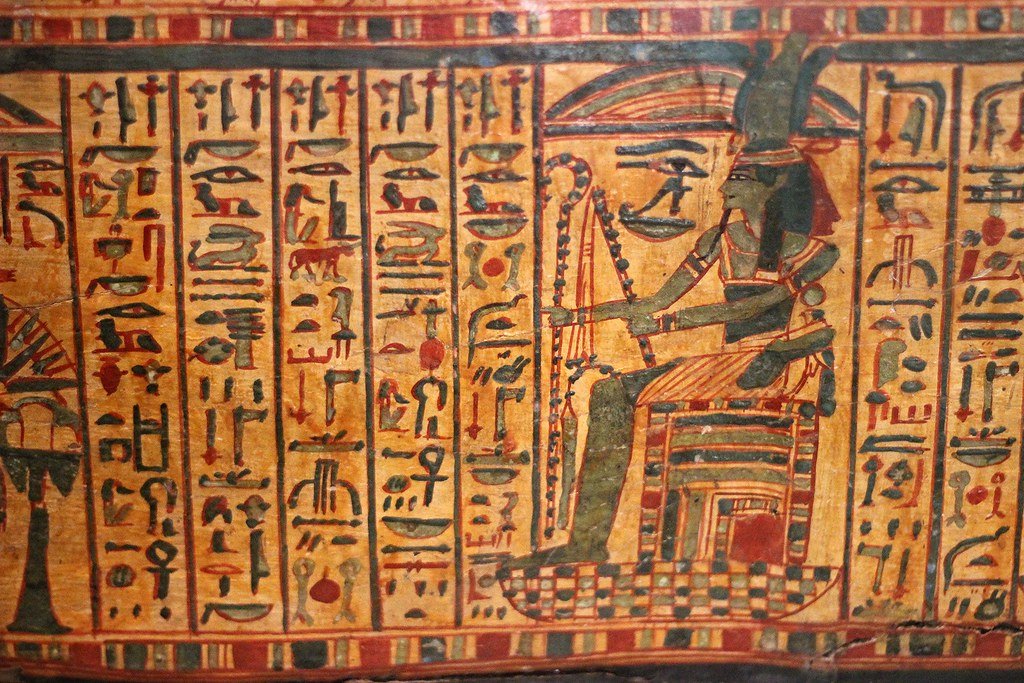
Nesyamun wasn’t just any ancient Egyptian – he was a priest and scribe at the temple of Karnak during the reign of Pharaoh Ramesses XI, around 1100 BCE. His job involved chanting sacred texts and communicating with the gods on behalf of the people, making his voice absolutely crucial to his daily work. The hieroglyphs on his coffin reveal that he believed his voice would continue serving the gods in the afterlife, a belief that makes the modern recreation of his vocal sounds almost prophetic. His mummified body was discovered in the 19th century and has been housed at Leeds City Museum in England, where researchers finally unlocked the secret of his ancient voice.
Perfect Preservation Against All Odds

What makes Nesyamun’s case so remarkable is the extraordinary preservation of his vocal tract, something that rarely survives the mummification process intact. Most mummies suffer damage to their soft tissues over thousands of years, but Nesyamun’s throat, tongue, and larynx remained in surprisingly good condition. The dry climate of Egypt combined with the careful mummification techniques used by ancient embalmers created the perfect storm for preservation. Scientists believe that his positioning during mummification, with his head tilted back and mouth slightly open, may have protected these crucial structures from decay and damage.
When Science Meets Ancient History

The team of researchers from Royal Holloway, University of London, and Leeds Museum used a combination of CT scanning and 3D printing technology to bring Nesyamun’s voice back to life. They first created detailed scans of his vocal tract, measuring every curve and dimension with millimeter precision. This data was then used to 3D print an exact replica of his vocal tract, which was connected to an artificial larynx that could produce sound. The process took years of careful planning and multiple attempts to get the acoustics just right, representing a fusion of archaeology, engineering, and acoustic science that would have seemed like magic to ancient Egyptians.
The Sound That Traveled Through Time

When the artificial vocal tract finally produced its first sound, it created a vowel sound similar to “eh” – the voice of a man who had been silent for over three millennia. The sound was haunting and otherworldly, a single note that seemed to bridge the gap between ancient and modern worlds. While it wasn’t a complete word or sentence, this simple sound represented one of the most significant achievements in experimental archaeology. The tone suggested a middle-aged man’s voice, consistent with Nesyamun’s estimated age at death, and the quality had an unmistakably human character that sent chills down the spines of everyone who heard it.
The Ethics of Speaking for the Dead

The project raised fascinating questions about consent and respect for ancient remains, issues that the research team took very seriously. They argued that Nesyamun himself had expressed a desire for his voice to continue in the afterlife, as recorded in the inscriptions on his coffin. The hieroglyphic texts specifically mention his wish to speak and be heard by the gods, suggesting he might have approved of the scientific recreation of his voice. However, the broader implications of giving voice to the dead continue to spark debates among ethicists, archaeologists, and religious scholars about the boundaries of scientific investigation and respect for ancient beliefs.
Limitations of Ancient Voice Recreation

While groundbreaking, the current technology has significant limitations that prevent us from hearing Nesyamun speak full sentences or words. The 3D printed vocal tract can only produce the sounds that would result from his specific anatomy in a neutral position – it can’t replicate the complex movements of tongue, lips, and soft palate that create speech. Think of it like having a piano with only one key working; you can hear the instrument’s tone, but you can’t play a melody. Scientists estimate that recreating actual speech would require knowledge of ancient Egyptian pronunciation, muscle memory patterns, and breathing techniques that are lost to time.
The Technology Behind the Miracle

The process begins with high-resolution CT scans that create thousands of cross-sectional images of the mummy’s head and neck. These images are processed by specialized software that can distinguish between different types of tissue, even in mummified remains. The 3D modeling software then reconstructs the vocal tract’s shape, accounting for any shrinkage or distortion that may have occurred over millennia. Finally, the 3D printer creates a physical model using materials that mimic the acoustic properties of living tissue, complete with the precise dimensions and curves that would have shaped Nesyamun’s unique voice.
What Ancient Voices Can Tell Us

Beyond the novelty of hearing ancient sounds, this technology offers genuine insights into how people lived and communicated thousands of years ago. Different vocal tract shapes produce different accents and tonal qualities, potentially revealing information about ancient languages and regional dialects. Scientists hope that future applications might help us understand how ancient languages actually sounded, moving beyond theoretical reconstructions to actual audio evidence. The project also demonstrates how individual anatomical features influence voice characteristics, adding a personal dimension to our understanding of historical figures who were previously just names on papyrus or stone.
The Future of Archaeological Audio

Nesyamun’s voice represents just the beginning of what researchers call “archaeological audio” – the recreation of sounds from the past. Scientists are already planning similar projects with other well-preserved mummies, and the technology continues to improve rapidly. Future developments might include recreating entire conversations, breathing patterns, or even singing voices from ancient times. The field is expanding to include not just human voices but also the sounds of ancient musical instruments, animal calls, and environmental noise that would have filled ancient cities and temples.
Challenges in Ancient Sound Recreation

Creating accurate ancient voices faces numerous obstacles that go far beyond technology. The biggest challenge is that voice involves much more than just the shape of the vocal tract – it requires understanding muscle tension, breathing patterns, and learned speech habits that die with the person. Additionally, the mummification process itself may have altered the tissues in ways that affect their acoustic properties, potentially making the recreated voice different from how the person actually sounded when alive. Scientists must also account for the fact that soft tissues shrink and change over thousands of years, requiring educated guesses about the original dimensions and flexibility of various structures.
Impact on Museum Experiences

The success of Nesyamun’s voice recreation is revolutionizing how museums present ancient history to visitors. Instead of just looking at silent artifacts, people can now experience a more immersive connection to the past through sound. Several museums are developing audio exhibits that incorporate recreated ancient voices, bringing a new sensory dimension to historical education. The emotional impact of hearing an ancient voice is profound – visitors often report feeling a deeper, more personal connection to historical figures when they can hear something resembling their actual voice, even if it’s just a simple vowel sound.
Scientific Breakthroughs in Mummy Research
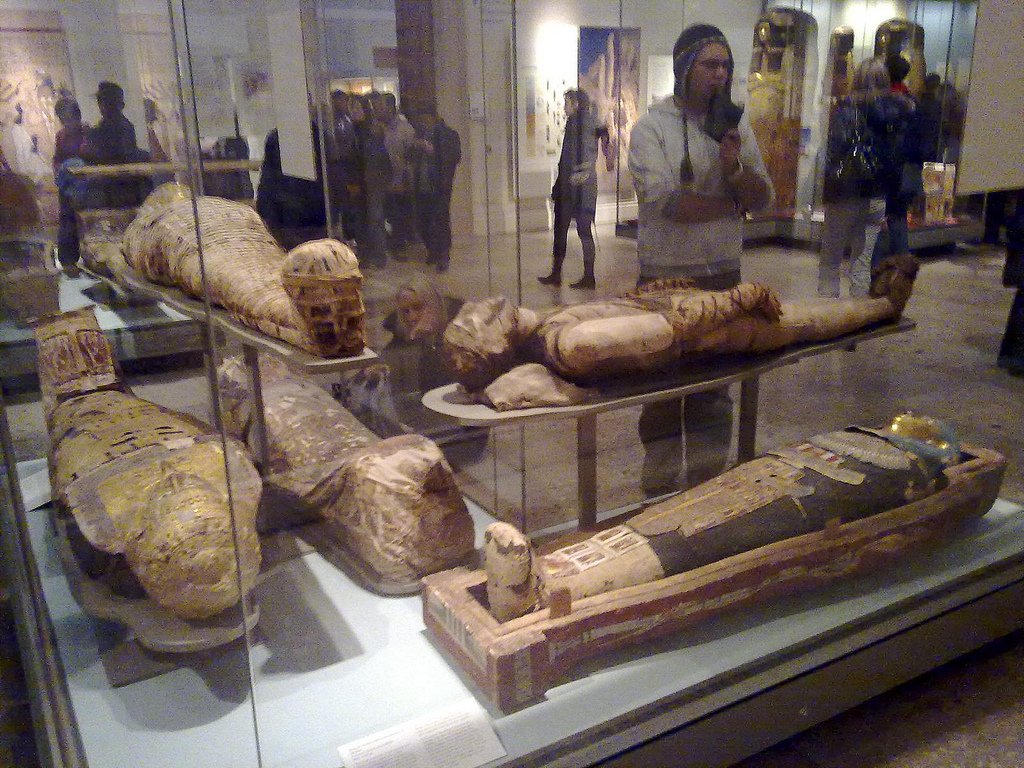
The vocal tract recreation project has advanced mummy research in unexpected ways, leading to better understanding of preservation techniques and tissue analysis. Researchers discovered new methods for analyzing soft tissue remains without damaging precious specimens, techniques now being applied to other archaeological investigations. The high-resolution imaging required for voice recreation has also revealed previously unknown details about ancient Egyptian mummification practices and the health conditions of people from that era. These advances are helping scientists piece together a more complete picture of daily life in ancient Egypt.
The Role of Artificial Intelligence

Artificial intelligence plays an increasingly important role in analyzing and interpreting the complex data required for voice recreation. Machine learning algorithms help scientists identify patterns in tissue structure and predict how different anatomical features would have affected voice production. AI systems can also simulate thousands of different vocal configurations, helping researchers understand the range of sounds that would have been possible for each individual. As AI technology advances, it may eventually enable more sophisticated recreations that approach actual speech rather than simple vowel sounds.
Connecting Ancient and Modern Voices

The recreation of Nesyamun’s voice creates an unprecedented bridge between ancient and modern humans, reminding us that people from 3,500 years ago were fundamentally similar to us. They had individual voices, accents, and ways of speaking that were as unique as fingerprints. This connection helps humanize ancient history in ways that traditional archaeological artifacts cannot, transforming abstract historical figures into real people with whom we can imagine having conversations. The project demonstrates that despite the vast span of time, human voices have remained remarkably consistent in their basic acoustic properties.
Religious and Cultural Implications

For many people, hearing Nesyamun’s recreated voice carries deep spiritual and cultural significance that extends far beyond scientific curiosity. Some view it as a form of resurrection or continuation of his priestly duties, while others see it as a profound violation of the natural order. Egyptian communities and religious groups have expressed varying opinions about the appropriateness of such research, with some celebrating the continuation of their ancestor’s voice and others questioning whether it respects traditional beliefs about death and the afterlife. These discussions highlight the complex relationship between scientific advancement and cultural sensitivity in archaeological research.
The Next Frontier in Ancient Communication

Scientists are already working on the next phase of ancient voice recreation, which involves attempting to recreate actual words and phrases rather than just vowel sounds. This ambitious goal requires combining vocal tract recreation with advanced understanding of ancient languages, breathing patterns, and articulation techniques. Researchers are studying modern speakers of related languages, analyzing ancient texts for clues about pronunciation, and developing new technologies that can simulate the complex movements involved in speech. While still years away, the possibility of hearing complete sentences spoken in ancient Egyptian represents the ultimate goal of this revolutionary field.
Beyond Human Voices

The technology developed for recreating Nesyamun’s voice is being adapted for other fascinating applications in archaeology and paleontology. Scientists are working on recreating the calls of extinct animals, the sounds of ancient musical instruments, and even the acoustic properties of ancient buildings and spaces. Some researchers are attempting to recreate the roars of extinct big cats, the songs of prehistoric birds, and the communication sounds of early human ancestors. These projects promise to add an entirely new dimension to our understanding of past ecosystems and ancient soundscapes.
Personal Stories from Ancient Times

What makes Nesyamun’s voice so compelling is that it represents a real individual with his own story, dreams, and daily experiences. He lived through political upheavals, performed religious ceremonies, and interacted with people whose names we’ll never know. His voice would have comforted the grieving, inspired the faithful, and carried out the sacred rituals that defined his community’s spiritual life. When we hear even a simple sound from his vocal tract, we’re connecting with all of these human experiences across an almost incomprehensible span of time. This personal connection transforms abstract historical knowledge into something immediate and emotionally powerful.
The Sound of Ancient Egypt Lives On
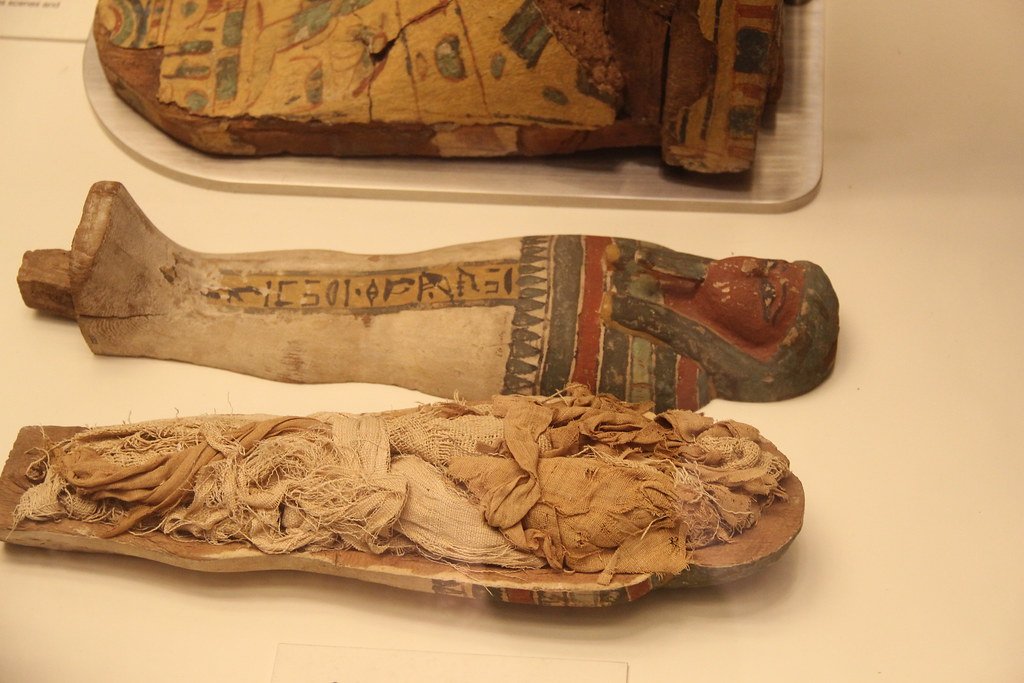
The recreation of Nesyamun’s voice has opened a doorway to the past that can never be fully closed again. We now know that it’s possible to hear echoes of ancient worlds, to connect with individuals who lived thousands of years before us through the most human of all abilities – the voice. While we may never hear Nesyamun recite his prayers or speak his name aloud, that single vowel sound carries within it the essence of human communication across millennia. As technology continues to advance, who knows what other ancient voices might break their long silence to speak to us once again?
The next time you visit a museum and see an ancient mummy case, remember that inside might be someone whose voice could potentially join ours in the modern world. What stories would they tell us if they could speak again?

